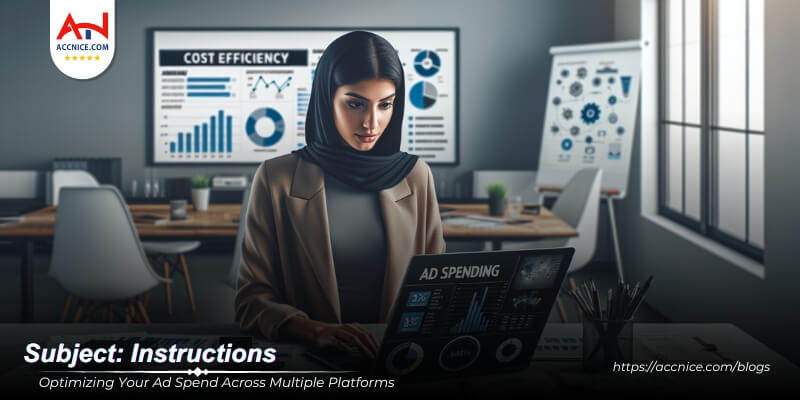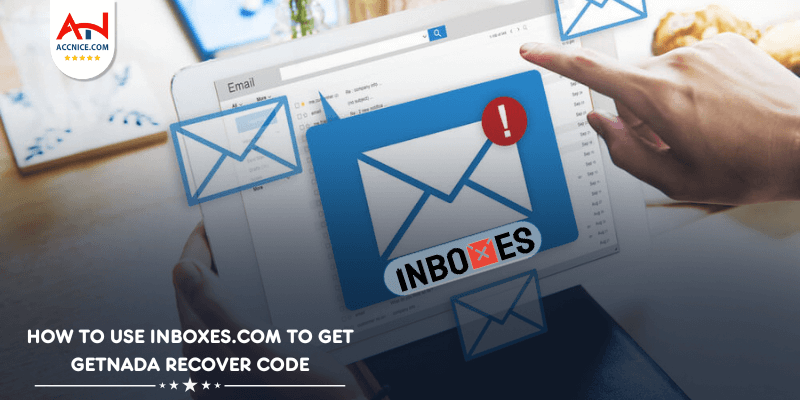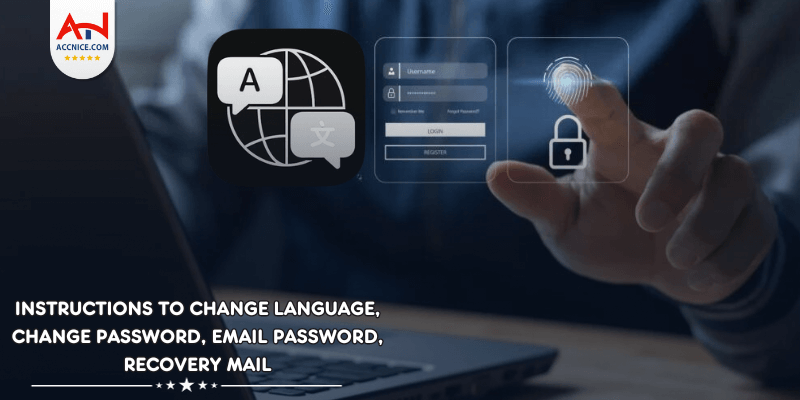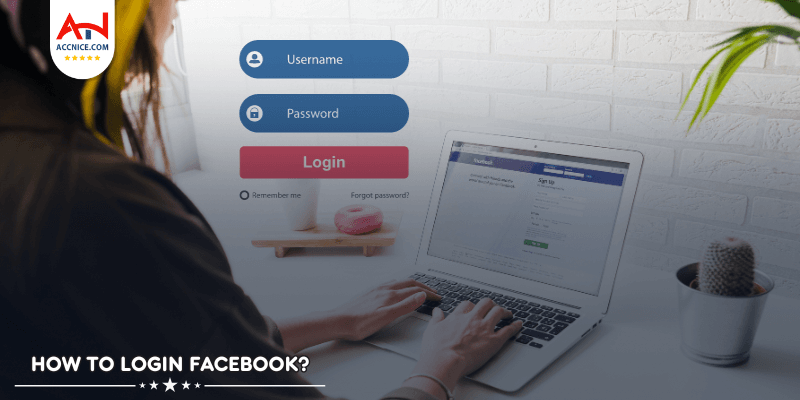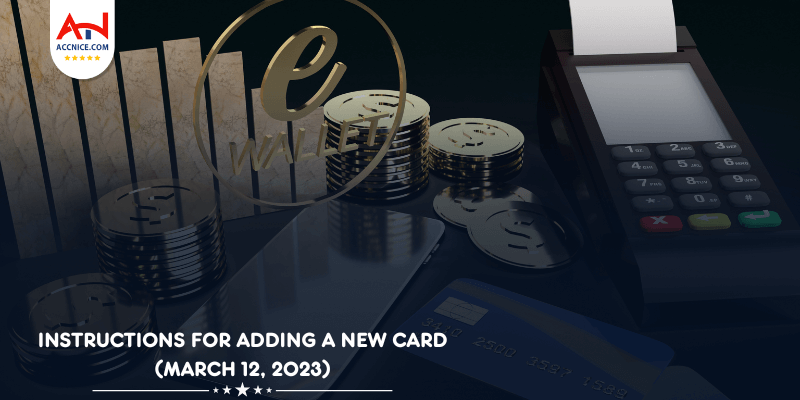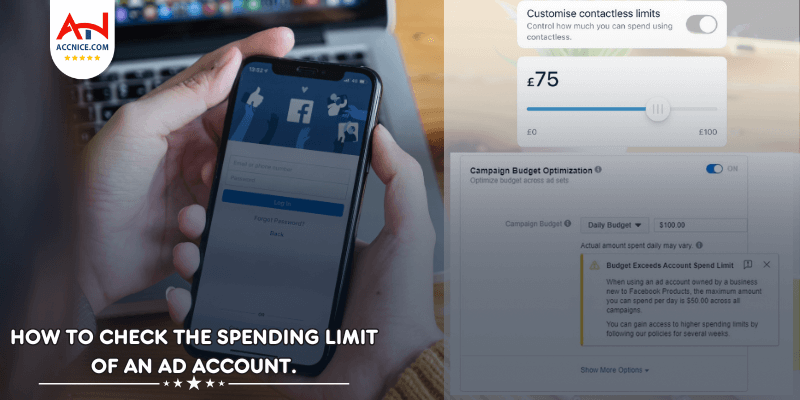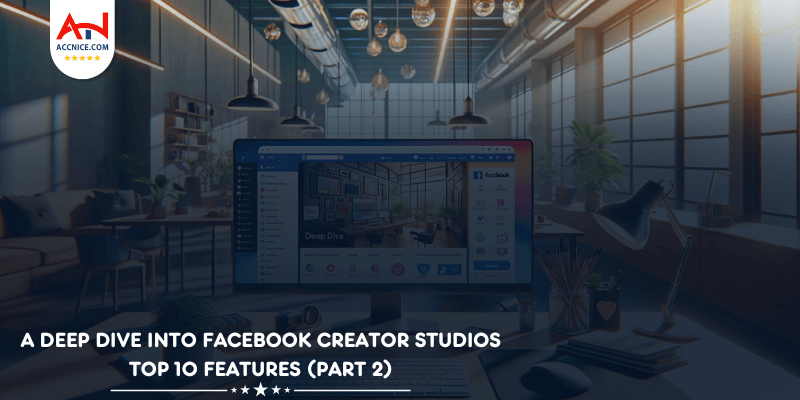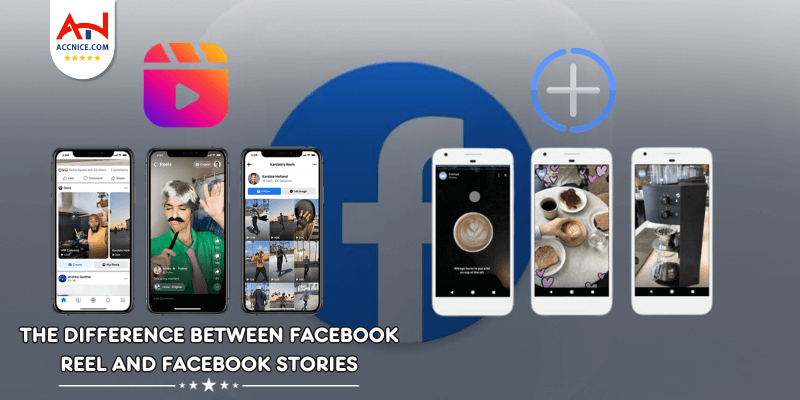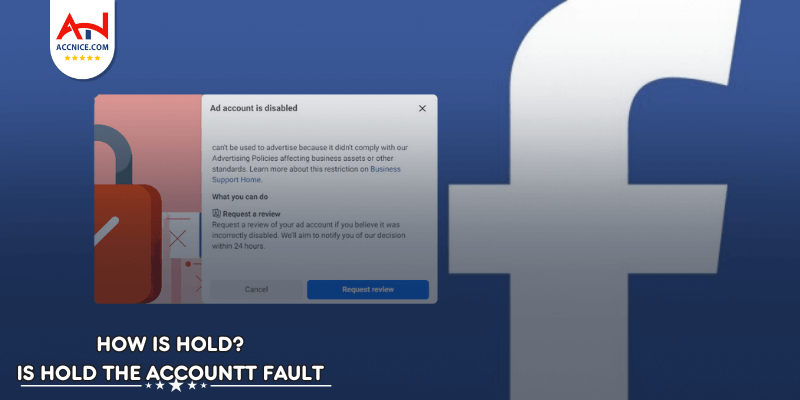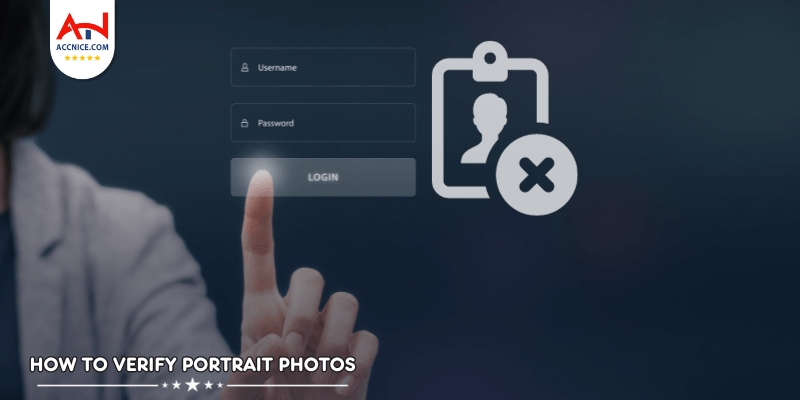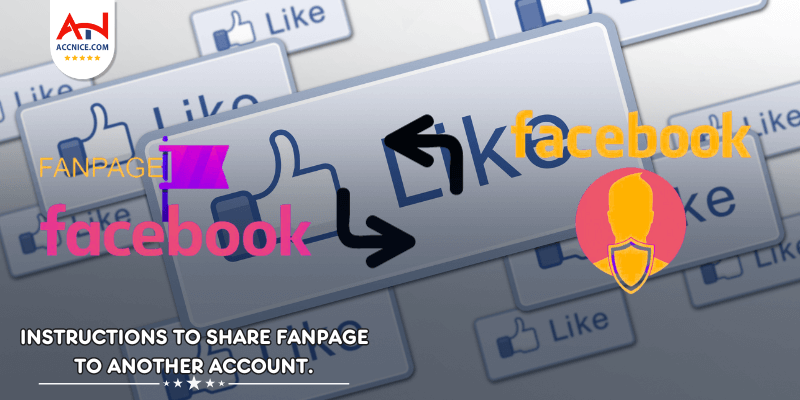Optimizing Your Ad Spend Across Multiple Platforms
Author:
Ngày viết: 2024-09-08 17:15:30
In today's digital landscape, businesses have many advertising platforms at their disposal. From social media giants like Facebook and Instagram to search engines like Google, there are plenty of options. However, effectively managing and optimizing your ad spend across multiple platforms can be challenging. This article Accnice will guide you through best practices for optimizing your advertising spend for maximum ROI.
Understanding the Importance of Multi-Platform Advertising

Broader Reach
- Diverse User Base: Each advertising platform attracts a different user demographic. For instance, Facebook users might differ in age, interests, and behaviors compared to Instagram or LinkedIn users. By advertising on multiple platforms, you can reach various audience segments that you might miss if you focused on just one channel.
- Increased Visibility: Multi-platform advertising ensures that your brand is visible in more places, increasing the likelihood of reaching potential customers. This extended reach can lead to higher brand awareness and more opportunities for engagement.
Diversified Risk
- Algorithm Changes: Social media platforms frequently update their algorithms, which can affect your ad performance. By spreading your advertising efforts across multiple platforms, you protect yourself from sudden changes that might negatively impact your campaigns on a single platform.
- Policy Changes: Advertising policies can change, sometimes without much notice. Diversifying your ad spend reduces the impact of policy changes on one platform, ensuring that your overall advertising strategy remains effective.
Enhanced Engagement
- Varied Content Formats: Different platforms excel in different types of content. For example, Instagram is great for visual content like images and short videos, while LinkedIn might be better suited for professional articles and industry insights. Using multiple platforms allows you to tailor your content to suit the strengths of each channel, creating a richer and more engaging experience for your audience.
- Cross-Platform Strategies: Engaging with your audience on multiple platforms allows you to create a more cohesive and comprehensive marketing strategy. For example, you can start a campaign on Instagram to generate interest and then drive traffic to a more detailed blog post or landing page on Facebook. This cross-platform approach can lead to higher engagement and conversion rates.
Understanding the importance of multi-platform advertising is crucial for maximizing your marketing efforts. By broadening your reach, diversifying risk, and enhancing engagement, you can create a more robust and resilient advertising strategy. Leveraging the unique strengths of each platform allows you to connect with a wider audience and achieve your marketing goals more effectively. Embrace multi-platform advertising to ensure your brand remains visible, relevant, and engaging across the digital landscape.
Setting Clear Objectives

Define Your Goals
-
Identify Primary Objectives: Before you allocate your ad spend, it is crucial to establish what you aim to achieve with your marketing efforts. Common objectives include:
- Increasing Brand Awareness: Making more people aware of your brand and its offerings.
- Driving Website Traffic: Encouraging users to visit your website to learn more about your products or services.
- Boosting Sales: Increasing the number of purchases made through your website or other sales channels.
- Generating Leads: Collecting contact information from potential customers for future marketing efforts.
- Enhancing Engagement: Encouraging interactions with your content, such as likes, comments, shares, and clicks.
-
SMART Goals: Ensure your goals are Specific, Measurable, Achievable, Relevant, and Time-bound (SMART). For example, instead of saying "increase sales," specify "increase sales by 20% within the next three months."
Align Goals with KPIs
-
Identify Relevant KPIs: Aligning your marketing objectives with specific Key Performance Indicators (KPIs) will help you measure and track the success of your campaigns. Key KPIs include:
- Click-Through Rate (CTR): The percentage of people who click on your ad after seeing it. A higher CTR indicates that your ad is compelling and relevant to your audience.
- Conversion Rate: The percentage of visitors who complete a desired action (e.g., making a purchase, filling out a form) after clicking on your ad. This metric shows how effectively your ads are driving meaningful actions.
- Return on Ad Spend (ROAS): The revenue generated from your ads divided by the cost of the ads. ROAS helps you understand the profitability of your advertising efforts.
- Cost Per Acquisition (CPA): The cost of acquiring a new customer. This metric helps you assess the efficiency of your ad spend in generating new customers.
- Engagement Rate: The level of interaction with your ad content, including likes, comments, shares, and clicks. A higher engagement rate often indicates more relevant and engaging content.
-
Set Benchmarks: Establish benchmarks for each KPI based on past performance or industry standards. These benchmarks will serve as a reference point to measure the effectiveness of your campaigns and guide future improvements.
-
Regular Monitoring and Adjustment: Continuously monitor your KPIs to track the performance of your campaigns. Use the data to make informed decisions and adjust your strategy as needed to achieve your objectives.
Setting clear objectives and aligning them with relevant KPIs is essential for guiding your marketing strategy and measuring the success of your campaigns. By defining specific goals and tracking key performance metrics, you can make data-driven decisions that optimize your ad spend and achieve your desired outcomes. This approach ensures that your marketing efforts are focused, measurable, and capable of delivering significant results.
Allocating Your Budget

Assess Platform Performance
- Analyze Historical Data: Review the performance metrics of past campaigns on each platform. Focus on key indicators such as ROI, CTR, conversion rates, and engagement levels to determine which platforms have historically delivered the best results for your business.
- Identify High-Performing Channels: Allocate a larger portion of your budget to the platforms that consistently provide the highest ROI. For example, if Facebook ads have generated higher conversions compared to Instagram ads, consider prioritizing Facebook in your budget allocation.
- Consider Audience Behavior: Take into account where your target audience spends most of their time and how they interact with different platforms. This insight will help ensure your budget is effectively reaching your intended audience.
Start Small and Scale
- Initial Testing Phase: When exploring new platforms or ad formats, begin with a small budget. This allows you to test the waters without significant financial risk.
- Monitor Performance: Carefully track the performance of your ads on the new platform. Use metrics such as CTR, engagement rates, and conversion rates to assess effectiveness.
- Gradual Scaling: If the initial tests are successful, gradually increase your spend on the new platform. This approach ensures that your budget is used efficiently and reduces the risk of overspending on unproven channels.
Flexible Budgeting
- Real-Time Adjustments: Maintain the flexibility to adjust your budget allocation in real-time based on performance data. If one platform is underperforming, reallocate funds to a higher-performing platform.
- Dynamic Budget Management: Use tools and strategies that allow for dynamic budget adjustments. Platforms like Facebook and Google Ads offer automated rules and bid strategies that can help optimize your spend in real-time.
- Continuous Monitoring: Regularly review your campaign performance across all platforms. Be proactive in shifting budgets to maximize ROI and take advantage of emerging opportunities.
Effective budget allocation is crucial for maximizing the impact of your advertising campaigns. By assessing platform performance, starting small and scaling based on results, and maintaining flexibility in your budget, you can ensure that your ad spend is optimized for the best possible returns. This strategic approach allows you to minimize risk, capitalize on high-performing channels, and adapt quickly to changing market conditions.
Crafting Platform-Specific Content
Tailor Your Message
- Platform Audiences: Recognize that each platform attracts a different demographic and type of user engagement. For instance, Instagram tends to have a younger audience who prefer visual content, while LinkedIn is more business-oriented, attracting professionals seeking insightful articles and thought leadership.
- Content Formats: Adapt your content to fit the preferred formats of each platform. On Instagram, use high-quality images and short videos that catch the eye and convey your message quickly. For Google Ads, focus on compelling text and keywords that capture search intent and drive clicks. Facebook content can be a mix of text, images, and videos, allowing for more detailed storytelling.
- Message Variation: While maintaining core messaging, vary your approach to suit the platform. A product highlight post on Instagram might focus on visual appeal and lifestyle integration, whereas the same product on Google Ads would highlight features and benefits through concise, keyword-optimized text.
Consistent Branding
- Unified Visual Identity: Ensure that your brand colors, logos, fonts, and overall visual style remain consistent across all platforms. This unified visual identity helps in building brand recognition and trust.
- Tone and Voice: Maintain a consistent tone and voice in your ad copy. Whether your brand is playful, professional, or inspirational, this should be reflected consistently, even though the specifics of the message may change.
- Cross-Platform Recognition: Consistency across platforms means that users who encounter your brand on multiple channels will recognize and trust your messaging. This familiarity can enhance engagement and conversion rates.
Leverage Platform Features
- Instagram Stories: Utilize Instagram Stories for short, engaging, and interactive content. Features like polls, quizzes, and swipe-up links can increase engagement and direct traffic to your website or landing pages.
- Facebook Groups: Leverage Facebook Groups to foster community engagement. Create and participate in groups related to your industry to share valuable content, answer questions, and build relationships with potential customers.
- Google Search Ads: Use Google Search Ads to target specific keywords relevant to your business. Craft your ad copy to match search intent and include strong CTAs that encourage clicks and conversions.
- LinkedIn Articles: For B2B marketing, use LinkedIn’s long-form articles to share in-depth insights and establish your brand as a thought leader in your industry.
Crafting platform-specific content is essential for maximizing the effectiveness of your advertising campaigns. By tailoring your message to fit the audience and format of each platform, maintaining consistent branding, and leveraging unique platform features, you can create compelling ads that resonate with users and drive results. This strategic approach not only enhances engagement but also builds a stronger, more recognizable brand across all digital channels.
Monitoring and Optimization
Track Performance Metrics
- Key Metrics: Regularly monitor essential performance metrics such as Click-Through Rate (CTR), conversion rates, and Return on Ad Spend (ROAS). These metrics provide a clear picture of how well your ads are performing.
- Analytics Tools: Utilize analytics tools provided by platforms like Facebook Insights, Instagram Insights, and Google Analytics to gather detailed data on ad performance.
- Data-Driven Decisions: Use the insights gained from these metrics to make informed, data-driven decisions about your ad campaigns. Understanding what works and what doesn’t allows you to optimize your efforts effectively.
Conduct A/B Testing
- Test Variations: Run A/B tests to compare different variations of your ads. This can include testing various headlines, images, ad copy, and calls-to-action (CTAs).
- Element Testing: Identify specific elements to test, such as visual content versus text-heavy content, different CTAs, or various color schemes.
- Results Analysis: Analyze the results of your A/B tests to determine which variations perform best. Use this data to refine and improve your ads for better engagement and conversions.
Adjust Your Strategy
- Data Interpretation: Interpret performance data to understand the strengths and weaknesses of your current ad strategy. Look for trends and patterns that indicate what aspects of your ads are resonating with your audience.
- Strategy Tweaks: Make necessary adjustments to your ad strategy based on the data. This could include tweaking your targeting to better reach your desired audience, changing your ad creatives to more effectively capture attention, or reallocating your budget to focus on the highest-performing ads.
- Continuous Improvement: Adopt a mindset of continuous improvement. Regularly review your performance metrics, conduct A/B tests, and adjust your strategy to ensure your ads remain effective and relevant.
Effective monitoring and optimization are crucial for the success of your advertising campaigns. By tracking key performance metrics, conducting A/B testing, and making data-driven adjustments to your strategy, you can ensure that your ads perform at their best. This ongoing process of evaluation and refinement helps you maximize your ROI and achieve your marketing objectives.
Utilizing Advanced Tools and Analytics
Google Analytics
- User Behavior Insights: Google Analytics offers detailed insights into user behavior, allowing you to understand how visitors interact with your website. Track metrics such as page views, session duration, bounce rates, and user flow.
- Ad Performance Tracking: Use Google Analytics to track the performance of your ad campaigns. Measure key metrics like conversion rates, source/medium performance, and e-commerce tracking.
- Custom Reports: Create custom reports to focus on specific data points relevant to your advertising goals. This helps in identifying which campaigns or ad elements are driving the best results.
- Detailed Analytics: Facebook Ads Manager provides comprehensive analytics and reporting features for both Facebook and Instagram ads. Track metrics such as impressions, reach, engagement, and conversions.
- Audience Insights: Utilize Audience Insights to gain a deeper understanding of your target audience’s demographics, interests, and behaviors. This information can help refine your targeting strategy.
- Optimization Suggestions: Facebook Ads Manager offers automated optimization suggestions, such as budget adjustments and audience targeting improvements, to enhance ad performance.
Third-Party Tools
- Hootsuite: Hootsuite allows you to manage and analyze your ad campaigns across multiple social media platforms. It offers features like scheduling, social listening, and detailed analytics to help you track performance and engage with your audience.
- Buffer: Buffer provides tools for managing your social media ads and posts. Use Buffer to schedule ads, track performance, and generate reports that give insights into your ad effectiveness.
- AdEspresso: AdEspresso by Hootsuite specializes in simplifying Facebook and Instagram ad management. It offers A/B testing, detailed analytics, and optimization tips to improve your ad performance.
- Integration Benefits: These third-party tools often integrate with various platforms, providing a unified dashboard for managing and analyzing campaigns across different channels. This can save time and provide a more holistic view of your ad performance.
Utilizing advanced tools and analytics is essential for maximizing the effectiveness of your advertising campaigns. Google Analytics, Facebook Ads Manager, and third-party tools like Hootsuite, Buffer, and AdEspresso offer robust features to help you gain insights, track performance, and optimize your ad spend. By leveraging these tools, you can make data-driven decisions that enhance your marketing strategy and drive better results.
Best Practices for Multi-Platform Advertising
Maintain Consistent Messaging
- Core Message Consistency: Ensure that while your content is tailored for each platform, your core message remains consistent. This reinforces brand identity and makes your campaigns cohesive.
- Brand Voice and Tone: Keep a uniform brand voice and tone across all platforms to create a recognizable and trustworthy brand presence.
Optimize for Mobile
- Mobile-Friendly Formats: Use mobile-friendly ad formats such as vertical videos and carousel ads. Ensure images and videos are high-quality and optimized for smaller screens.
- Fast Load Times: Make sure your ads and landing pages load quickly on mobile devices. Slow load times can lead to higher bounce rates and lost conversions.
- Responsive Design: Design ads that look good on both desktop and mobile to ensure a seamless user experience.
Engage with Your Audience
- Active Engagement: Respond promptly to comments, messages, and reviews across all platforms. Active engagement builds strong relationships and trust with your audience.
- Interactive Content: Use polls, quizzes, and interactive posts to encourage user participation and increase engagement rates.
- Monitor Feedback: Regularly monitor and respond to feedback to understand customer needs and improve your products or services accordingly.
Conclusion
Optimizing your ad spend across multiple platforms requires a strategic approach. By setting clear objectives, allocating your budget wisely, crafting platform-specific content, and continuously monitoring and optimizing your campaigns, you can achieve maximum ROI. Utilize advanced tools and follow best practices to enhance your multi-platform advertising efforts. This holistic strategy ensures that your marketing campaigns are effective, engaging, and yield the best possible results.
Thank You For Following Accnice.com
Buy Facebook, TikTok, Twitter, Instagram, Google advertising accounts and Genuine License Keys at the best prices at Accnice.com
